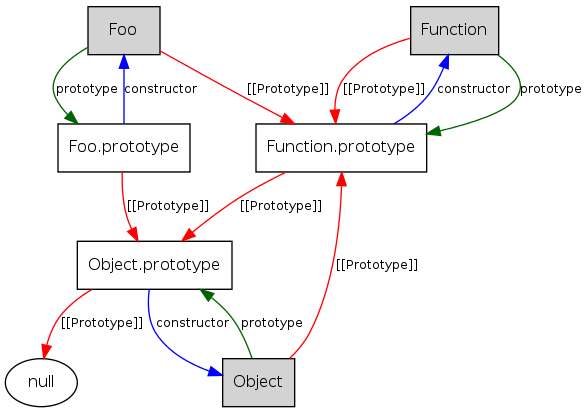Is there inheritance
or delegation?

Dominik Lubański

SUBJECT
-
People learn frameworks, not JavaScript
- Deep understanding of language itself
is critical for being a master of developer tools
- [[Prototype]] is the most common mechanism built-in JS, but it is not well understood
EXAMPLE #1
const parent = { a: 1 };
const child = Object.create(parent);child.a++;console.log(child.a, parent.a);// 1, 1console.log(child.a, parent.a);// 2, 1EXAMPLE #2
const parent = { a: { b: 1 } };
const child = Object.create(parent);child.a.b++;console.log(child.a.b, parent.a.b);// 1, 1console.log(child.a.b, parent.a.b);// 2, 2EXAMPLE #3
const parent = {
get a() { return parent._a || 1 },
set a(val) { parent._a = val },
};
const child = Object.create(parent);child.a++;console.log(child.a, parent.a);// 1, 1console.log(child.a, parent.a);// 2, 2QUESTION
IS THERE INHERITANCE OR DELEGATION?
JavaScript is a bit confusing for developers experienced in class-based languages (like Java or C++), as it is dynamic and does not provide a class implementation per se.
JS creates a link between two objects, where one object can essentially delegate property/function access to another object.
Kyle Simpson / You-Dont-Know-JS
"Delegation" is a much more accurate term for JavaScript's object-linking mechanism.
[[PROTOTYPE]]
Every object has an internal property called [[Prototype]], which links to other object or null:
const a = {};
// or
const a = Object.create(Object.prototype);
// a --> Object.prototype --> null
Object.getPrototypeOf(a));
// Object.prototype
a.__proto__;
// Object.prototype
a.__proto__.__proto__;
// null
[[PROTOTYPE]]
[[GET]]
EXAMPLE #1
const parent = { a: 1 };
const child = Object.create(parent);EXAMPLE #2
const parent = { a: { b: 1 } };
const child = Object.create(parent);// child.a;
child.[[GET]]('a', child);// child.a.b
tempA = child.[[GET]]('a', child);
tempA.[[GET]]('b', tempA);object.[[GET]](property, receiver)
- Let desc be object.getOwnPropertyDescriptor(property)
- If desc is undefined:
- Let parent be Object.getPrototypeOf(object)
- If parent is null, return undefined.
- Return parent.[[GET](property, receiver)
- If desc is data descriptor return desc.value
- If desc is accessor return desc.get.call(receiver)
[[SET]]
EXAMPLE #1
const parent = { a: 1 };
const child = Object.create(parent);EXAMPLE #2
const parent = { a: { b: 1 } };
const child = Object.create(parent);// child.a++;
tempA = child.[[GET]]('a', child);
child.[[SET]]('a', tempA + 1, child);// child.a.b++
tempA = child.[[GET]]('a', child);
tempB = tempA.[[GET]]('b', tempA);
tempA.[[SET]]('b', tempB + 1, tempA);object.[[SET]](property, value, receiver)
- Let desc be object.getOwnPropertyDescriptor(property)
- If desc is undefined:
- Let parent be Object.getPrototypeOf(object)
- If parent is not null, return
parent.[[SET](property, value, receiver) - Else let desc be empty data descriptor
-
If desc is data descriptor
- If desc.writable is false, return false
- receiver.[[DefineOwnProperty]](property, value) or CreateDataProperty(receiver, property, value)
- If desc is accessor return desc.set.call(receiver, value)
simplified!
Constructor
function Library() {
this.value = 1;
};Library.prototype.getValue = function getValue() {
return this.value;
};const library = new Library();
library.getValue(); // 1Many libraries uses constructor pattern:
Object.getPrototypeOf(library) === Library.prototype;
// library
// -> Library.prototype -> Object.prototype -> null;Constructor
function Library() {};
typeof Library.prototype;
// "object"
Object.getPrototypeOf(Library.prototype);
// Object.prototype
Library.prototype.constructor === Library;
// trueLibrary.prototype is special a property, which reference to object used as a prototype of constructor instance:
Constructor
function Library() {};
typeof Library === 'function'; // true
Library instanceof Object; // trueFunction has own type, but it is still an ordinary object:
// Prototype chain:
// Library -> Function.prototype -> Object.prototype
Object.getPrototypeOf(Library);
// Function.prototype
Object.getPrototypeOf(Function.prototype);
// Object.prototypeConstructor
// when calling with 'new'
function Library() {
this = Object.create(Library.prototype);
this.value = 1;
return this;
};function Library() {
this.value = 1;
};new operator calls function with special behavior:
Constructor

Constructor
- With constructor pattern logic part can be easily shared between instances.
- Sharing references to functions is safe as they are called with proper context
- Sharing data values and accessor can cause unexpected result
Constructor
function Library() { // ... };
Library.prototype.options = { value: 1 };
const a = new Library();
const b = new Library();
// User assumes that he changes only own options
a.options.value++;
a.options.value === b.options.value;
// true
Sharing reference to object in prototype:
CLASS SYNTAX
...the class keyword is introduced in ES6, but is syntactical sugar, JavaScript remaining
prototype-based
CLASS SYNTAX
class Library {
constructor() {
this.value = 1;
}
getValue() {
return this.value;
}
}function Library() {
this.value = 1;
};Library.prototype.getValue =
function () {
return this.value;
};class syntax still uses prototype:
typeof Library; // "function"
typeof Library.prototype.getValue; // "function"CLASS SYNTAX
- Simpler syntax than constructor pattern
- Prevent anti-patterns like sharing data values - only functions in prototype
- Constructor throws error when called without new operator
- extends pattern built into semantics